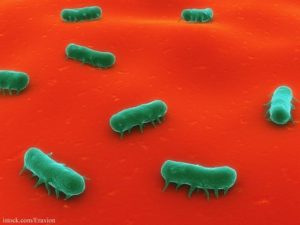Scientists at Penn State’s College of Agricultural Sciences have developed a faster method to identify Salmonella strains, according to a paper published in the Journal of Clinical Microbiology. Salmonella Newport is the third most prevalent cause of salmonellosis. Rapid and accurate methods for identification are needed to track the strains during outbreaks to identify the cause and issue warnings and recalls.
 This new test can decrease the response time to food poisoning outbreaks so epidemiologists can find the source of the bacteria. Lead author Nikki Shariat said that it takes a few days to identify the outbreak strain using pulsed gel electrophoresis, or PFGE. The new method can cut this time by 50%.
This new test can decrease the response time to food poisoning outbreaks so epidemiologists can find the source of the bacteria. Lead author Nikki Shariat said that it takes a few days to identify the outbreak strain using pulsed gel electrophoresis, or PFGE. The new method can cut this time by 50%.
The method uses two virulence genes and two regions of Salmonella DNA called “Clustered Regularly Interspaced Short Palindromic Repeats”, or CRISPRs. Researchers can detect differences in Salmonella DNA at these locations by looking at the DNA sequence. They defined 38 Salmonella Newport Sequence Types (NSTs) that are similar by PFGE profiles too, which corroborates the accuracy of the test.
The scientists then analyzed 20 isolates of Salmonella sent to them by the Pennsylvania Department of Health. Ten of the isolates were from the 2012 Salmonella outbreak associated with tomatoes and ten were not from the outbreak. Researchers were able to exactly identify those isolates associated with the outbreak using the new test.




